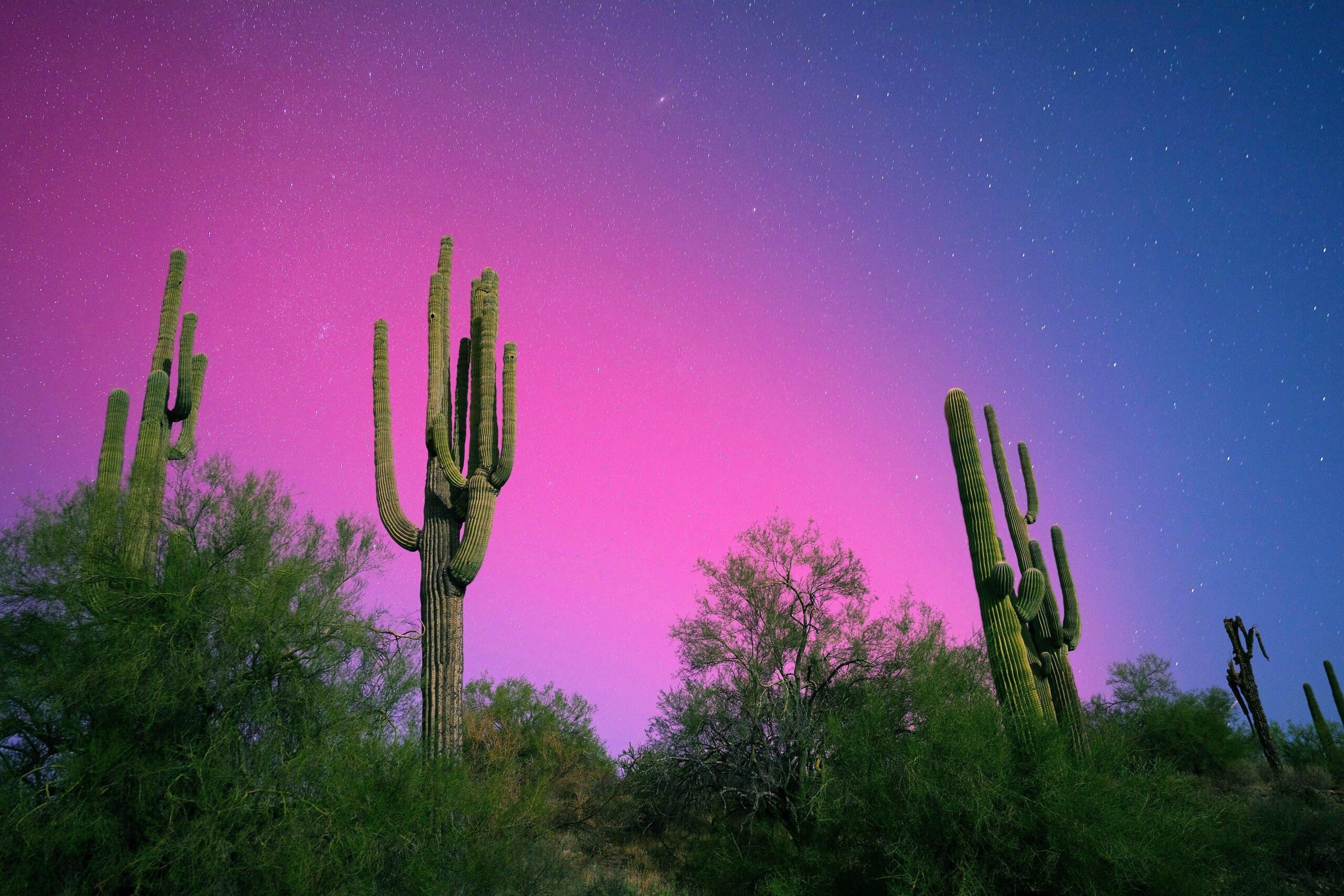
Aurora Borealis Forecast: Heightened Activity Expected Through Summer 2025
Despite the shortening nights, skywatchers in the United States can anticipate an extended period of heightened auroral activity, with prime viewing opportunities stretching well into the spring and summer months. Experts predict that the frequency and intensity of the aurora borealis, commonly known as the northern lights, will remain elevated as the sun continues its journey through its current solar maximum.
While recent nights, including Tuesday and Wednesday, presented limited chances to witness the aurora, the overall outlook remains positive. The increased solar activity driving these spectacular displays is projected to persist, offering numerous opportunities to observe this awe-inspiring phenomenon.
The Space Weather Prediction Center, a division of the National Oceanic and Atmospheric Administration (NOAA), issued a forecast for a minor geomagnetic storm expected on Wednesday, March 5th. Such storms, while categorized as minor, can still significantly impact various systems and, crucially, enhance auroral visibility.
The predicted impacts associated with this minor geomagnetic storm include:
-
Power Systems: The possibility of weak fluctuations within power grids. These are generally localized and unlikely to cause widespread disruptions.
-
Spacecraft Operations: Minor impacts on satellite operations, potentially requiring adjustments to satellite positioning or communication protocols to mitigate any interference.
-
Other Systems: The observation that migratory animals may be affected at this and higher storm levels. This highlights the sensitivity of certain species to geomagnetic disturbances. And most excitingly, the common visibility of the aurora at high latitudes, encompassing regions such as northern Michigan and Maine.
The phenomenon of the aurora borealis is intrinsically linked to the sun’s activity. The sun exhibits a cyclical pattern of activity, characterized by an approximately 11-year solar cycle. During this cycle, the number of sunspots on the sun’s surface fluctuates, reaching a peak known as the solar maximum. The current period represents Solar Cycle 25, which is projected to remain at its peak until at least the first half of 2025.
Solar cycles provide a framework for understanding the overall level of activity of our nearest star. Traditionally, the cycle is measured by the rise and fall in the number of sunspots. However, it also corresponds with increases in other forms of solar activity, including solar flares, coronal mass ejections, and radio emissions, collectively referred to as space weather.
Sunspots are regions of intense magnetic activity on the sun’s surface. These regions are often the source of solar flares and coronal mass ejections. Solar flares are sudden releases of energy that can disrupt radio communications and satellite operations. Coronal mass ejections (CMEs) are massive eruptions of plasma and magnetic field from the sun’s corona, the outermost layer of the sun’s atmosphere.
When CMEs reach Earth, they interact with our planet’s magnetic field, creating geomagnetic storms. These storms can cause a variety of effects, including disruptions to power grids, communication systems, and navigation systems. They also are the primary cause of auroras.
"We are entering the peak of Solar Cycle 25," explained Erica Grow Cei, a spokesperson for the National Weather Service, during an interview with USA TODAY last summer. This statement underscores the significance of the current period for auroral observation, as the heightened solar activity translates directly into increased opportunities to witness these breathtaking displays.
However, forecasting the precise timing and location of auroral displays remains a significant challenge. Unlike terrestrial weather forecasting, which relies on a dense network of observations and sophisticated models, space weather forecasting depends on observations of the sun, a staggering 93 million miles away.
"There are so many uncertainties, it makes it difficult to predict," noted Bill Murtagh, the program coordinator at the Space Weather Prediction Center, also speaking to USA TODAY last year. This acknowledgment highlights the inherent complexities in forecasting space weather and emphasizes the need for a probabilistic approach.
Murtagh went on to candidly admit, "And as hard as it is to forecast weather here on Earth, we are decades behind the forecast capabilities of our colleagues in meteorology," referring to space weather. This frank assessment underscores the relatively nascent state of space weather forecasting compared to terrestrial weather forecasting, despite the crucial importance of understanding and predicting space weather events.
The best course of action for those interested in witnessing the aurora borealis is to stay informed by following updates from NOAA’s Space Weather Prediction Center. This organization provides real-time data and forecasts on solar activity and geomagnetic conditions, offering the most accurate and up-to-date information available.
While precise predictions remain elusive, the overall outlook for auroral viewing in the United States is exceptionally promising. The combination of heightened solar activity and the approaching spring and summer months, with their increased daylight hours, presents a unique opportunity to witness this natural wonder. By staying informed and monitoring forecasts from the Space Weather Prediction Center, skywatchers can maximize their chances of experiencing the awe-inspiring spectacle of the aurora borealis.
